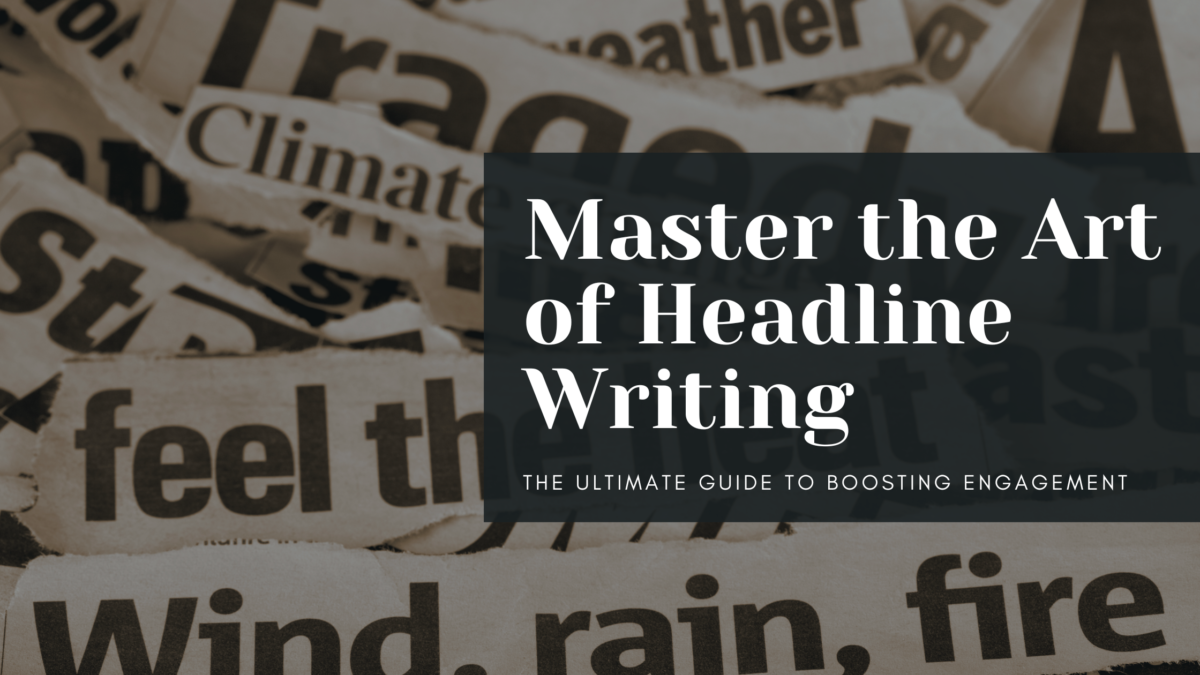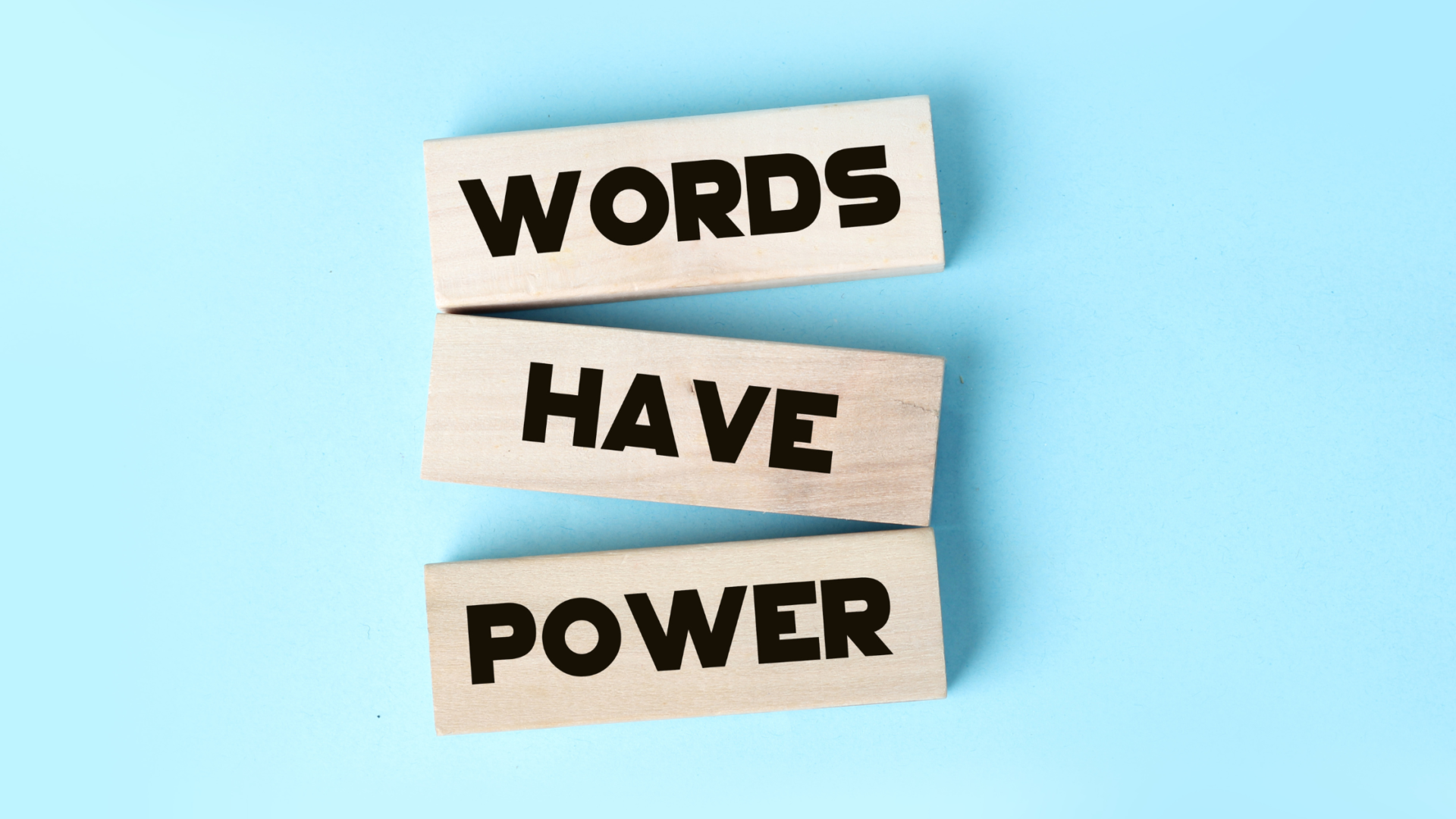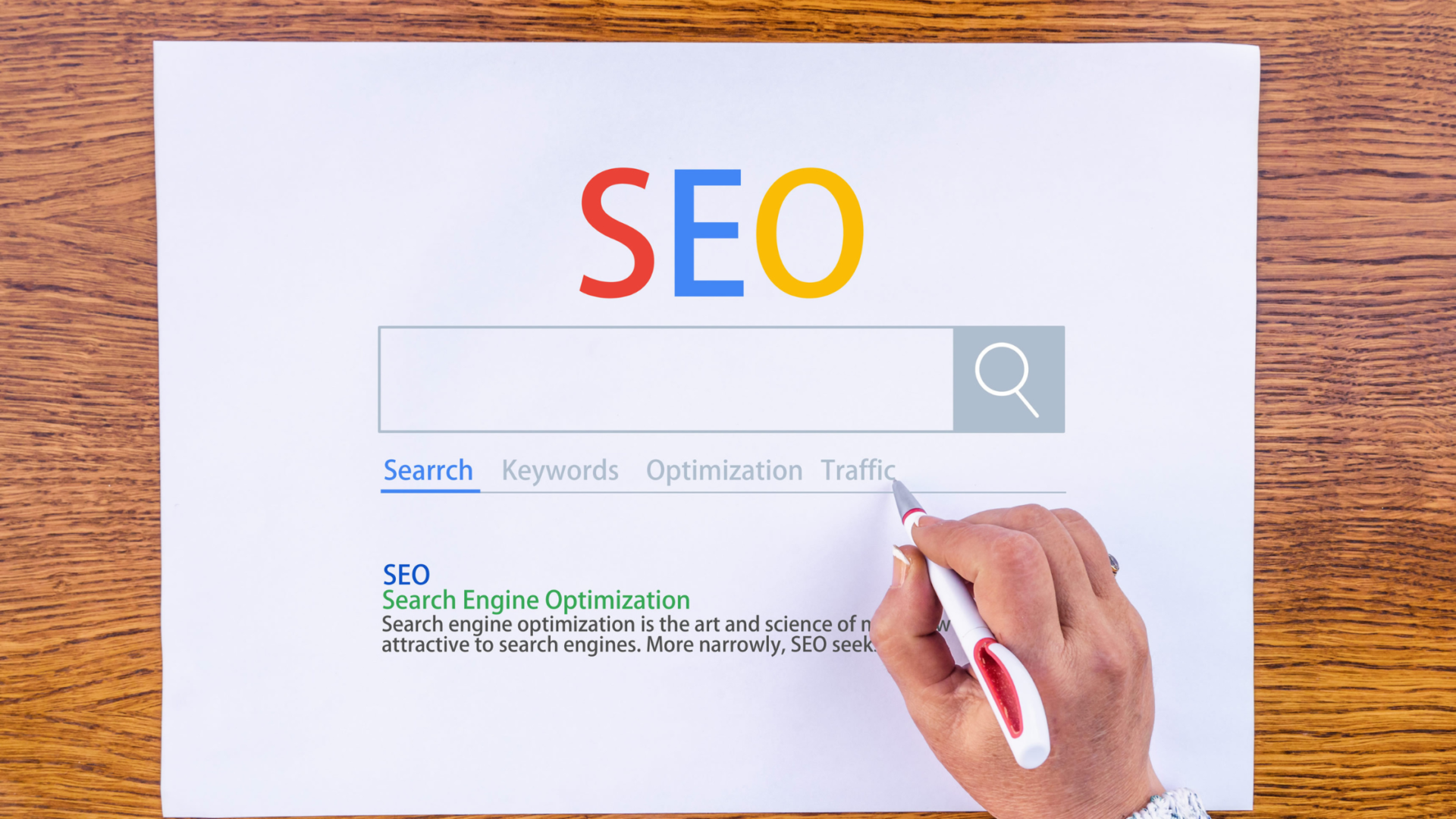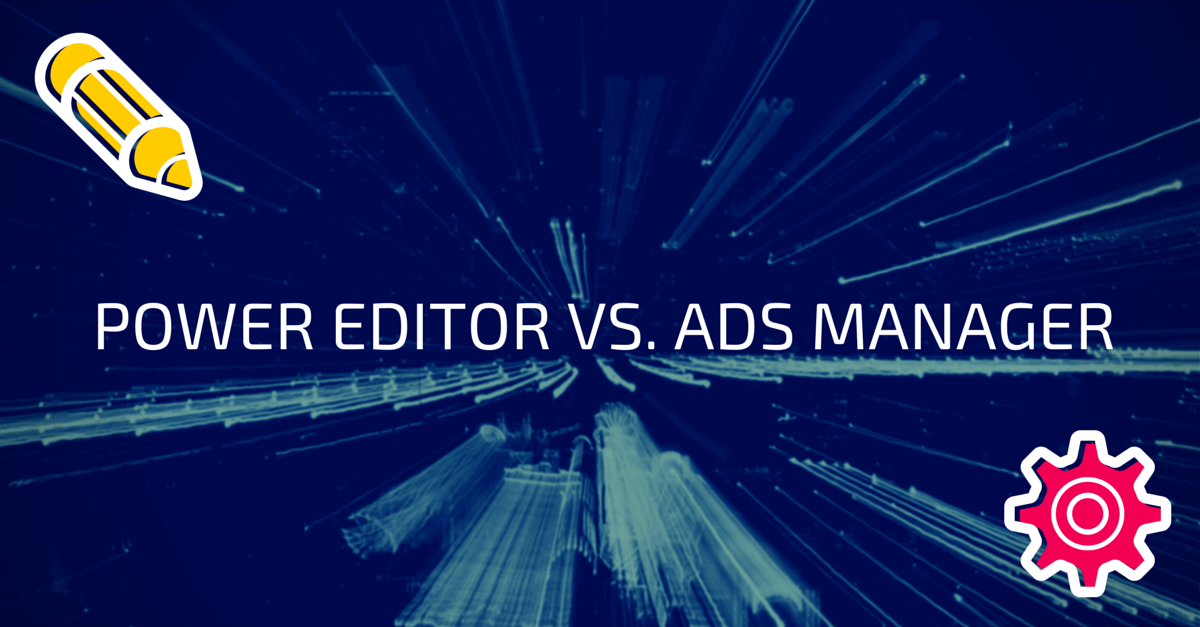
Master the Art of Headline Writing: The Ultimate Guide to Boosting Engagement
The Power of Headlines
Have you ever found yourself stumped when trying to craft that perfect headline? Wondering how to use powerful headlines to drive engagement, capture your reader’s attention, and truly make an impact? Then you’re in the right place. Welcome to “Master the Art of Headline Writing: The Ultimate Guide to Boosting Engagement,” a comprehensive journey into the world of powerful, attention-driven headline writing.
As a key component in content marketing, headlines are the gatekeepers of your content. They’re the first impression you give to your audience, and whether it’s a blog post, social media update, or email subject line, they have the potential to either draw readers in or push them away. That’s why writing effective headlines is absolutely critical.
This guide will provide you with proven strategies and practical tips to boost your headline writing skills. From the science of search engine optimization to understanding your target audience, from crafting compelling blog titles, for different platforms to measuring the performance of your headlines, you’ll learn it all here.
Ready to transform your content with compelling headlines and see a significant increase in engagement? Let’s get started on this exciting journey!

Understanding Headline Importance
Headlines are not just simple statements at the top of your content; they’re the hook that draws your audience in. If a headline doesn’t engage readers, the rest of the content risks going unnoticed, regardless of how informative or well-written it is. That’s why it’s critical to understand the role of headlines in driving engagement.
The science behind headline clicks is fascinating. Various factors, including the use of power words, emotional triggers, and odd numbers, can significantly affect how users react to headlines. By mastering these elements, you can write headlines that grab your readers’ attention and compel them to click through.
First impressions matter, especially in the world of content marketing. And the headline often serves as this first impression. An effective headline sets the tone for the rest of the content and gives your readers an idea of what to expect. So, the question is, are you making a great first impression with your headlines?

Basic Principles of Headline Writing
Writing effective headlines isn’t rocket science, but it does require understanding and applying a few basic principles. Let’s explore these in detail.
Firstly, clarity is key in headline writing. You need to convey your message succinctly and make sure your audience understands what your content is about. A good headline doesn’t leave room for misinterpretation.
Secondly, using actionable language can make your headlines more compelling. Verbs can invigorate your headline, giving it energy and prompting your readers to take action.
Next, we can’t overlook the power of numbers. Our brains are attracted to numbers because they organize information into a logical order. Odd numbers, specifically, have been found to perform better in headlines. So, don’t shy away from using them.
Creating curiosity is another important principle of headline writing. If you can spark curiosity in your readers, they’re more likely to click on your headline to find out more. However, remember not to give away too much in the headline – the goal is to pique interest, not satisfy it.
Lastly, utilizing emotional triggers can significantly boost engagement and your headline effectiveness. Whether it’s joy, surprise, or anticipation, triggering an emotional response can compel your readers to engage with your content. But again, balance is key. Too much emotion can come across as clickbait, while too little might not generate enough interest.
Armed with these basic principles, you’re already well on your way to mastering the art of headline writing. But there’s still much more to learn, so let’s continue our journey!

Headline Styles and Formats
Now that you understand the importance of headlines and the basic principles of crafting them, let’s talk about different headline styles and formats. Not all headlines are created equal, and choosing the right style can dramatically impact your engagement rate. Let’s unpack some common types of headlines that work wonders in the content marketing world.
How-to headlines are quite popular, as they immediately signal to readers that they’ll gain practical knowledge or skills. For instance, “How to Use Social Media to Boost Your Small Business” is an engaging headline for those looking to expand their online presence.
List headlines also perform well. Our brains love organized information, and a list provides that. Plus, integrating specific numbers (odd ones perform best) can make your headline even more enticing. An example might be “7 Proven Strategies to Increase Your Blog Traffic.”
Question headlines can spark curiosity and engage readers by addressing their needs, wants, or problems directly. A headline like “Want to Write Killer Blog Posts? Here’s What You Need to Know” is a powerful engagement tool.
Secret-of headlines appeal to the reader’s curiosity and desire for exclusive knowledge. “The Secret of Writing Attention-Driven Headlines” is likely to draw in those wanting to master headline writing.
Command headlines are another style that directly instructs the reader to take some action, like “Boost Your Engagement with These Headline Writing Tips.”
Mix and match these formats to add variety to your headlines and keep your readers intrigued and engaged.

Audience Understanding and Headline Customization
Writing effective headlines isn’t just about crafting catchy phrases. It’s also about knowing your audience and tailoring your headlines to their needs, interests, and desires. Do they want useful blog post ideas? Are they searching for headline writing tips? Are they struggling with engaging readers on their blog or social media posts? Understanding your target audience is the key to crafting catchy headlines that that resonate.
Cultural and linguistic considerations also play a role. Ensure your headline language aligns with your audience’s dialect, preferences, and cultural sensitivities. The right headline communicates, “This is exactly what you’ve been looking for!” to your audience.

Utilizing Keywords for SEO
In today’s digital age, a catchy headline may not be enough. You also need to consider search engine optimization (SEO) to make your content visible in Google search results. Incorporating targeted keywords in your headlines helps search engines understand your content, increasing the likelihood of appearing in relevant search results.
However, balance is key. While integrating specific keywords can help your content rank higher, it should not be at the expense of readability or relevance. A headline packed with keywords but lacking in coherence or intrigue won’t drive engagement. Always remember, you’re writing for humans first, search engines second.
Using SEO effectively can lead to more traffic, increased click-through rates, and overall more engagement for your content. So, do your keyword research, and craft headlines that harmonize SEO with compelling content. Your readers – and Google – will thank you for it!
And that’s it for these chapters! Now, armed with these strategies and insights, you’re on your way to crafting compelling, SEO-friendly headlines. But don’t stop here – we’ve got more chapters filled with valuable advice coming up. So, ready to dive deeper into the art of headline writing?

Using Power Words and Emotional Triggers
Power words can be a content writer’s best friend. They are emotionally evocative words that instantly grab a reader’s attention and pique their interest. Words like ‘amazing’, ‘exclusive’, ‘remarkable’, and ‘revolutionary’ are all examples of power words that can turn a good headline into a great headline.
Take, for example, a blog post about improving one’s financial standing. A headline like “How to Improve Your Financial Situation” is effective, but by adding a power word, it becomes even more compelling: “How to Drastically Improve Your Financial Situation.”
But don’t stop at power words; use emotional triggers to connect with your readers. Human decisions are driven by emotions, so a headline that triggers emotions like hope, curiosity, surprise, or urgency can engage readers at a deeper level. For example, “Ravishing Blog Post Ideas to Skyrocket Your Traffic” triggers excitement and anticipation, making it a magnetic headline.

Crafting Headlines for Different Platforms
Not all platforms are created equal when it comes to headline writing. The headline that works well for a blog post might not perform as well on social media or in an email subject line. You need to craft headlines that cater to the characteristics and audience expectations of each platform.
For example, headlines for social media posts should be catchy, concise, and shareable. Using action verbs, compelling titles, or asking questions can be effective strategies. On the other hand, headlines for blog posts can afford to be a bit longer and more descriptive, often incorporating SEO-friendly keywords for better search engine results.
The key here is to understand the nuances of each platform and adjust your headline writing accordingly. This strategy ensures your content gets the attention it deserves, regardless of where it’s posted.

Analyzing and Testing Your Headlines
So, you’ve mastered the art of crafting compelling and persuasive headlines, but how do you know if they’re working? Welcome to the world of headline testing and analytics.
One way to evaluate the effectiveness of your headlines is to use a headline analyzer tool. These tools can provide valuable insights into the potential performance of your headline, based on factors such as word choice, length, sentiment, and searchability.
Beyond headline analyzers, you can also conduct A/B testing, especially for crucial content like landing pages or high-stakes marketing campaigns. A/B testing involves creating two different headlines for the same piece of content and seeing which one performs better.
Finally, don’t forget to keep an eye on your content’s performance metrics. Click-through rates, social shares, time spent on the page – these can all provide insights into how well your headline is resonating with your readers.
By analyzing and testing your headlines, you’ll continue to refine your headline writing skills and, over time, craft headlines that consistently drive engagement and deliver results.
With that, we’re wrapping up these chapters, but we’re not done yet! More handy tips and powerful strategies for mastering the art of headline writing await you in the upcoming chapters. Are you ready to take your headline writing skills even further?
The Role of Headlines in Content Marketing Strategy
When planning your content marketing efforts, it’s easy to overlook the critical role of headline writing. But remember, a compelling headline is your first impression, the ambassador of your content, and sometimes, your only shot at capturing the audience’s attention.
In the realm of content marketing, headlines have a threefold mission. First, they attract the right audience and make a solid first impression. A headline that resonates with your specific audience boosts engagement right off the bat, whether it’s for a blog post, social media post, or an email newsletter.
Second, headlines guide the reader’s expectation. They give your audience an idea of what to anticipate, ensuring the body copy delivers on the promise made by the headline. A headline like “10 Financial Tips for the Absolute Amateur” sets a clear expectation for easy-to-understand financial advice.
Finally, a headline contributes to the cohesiveness of your content strategy. By maintaining a consistent tone, style, and approach in your headlines, you build a content identity that readers recognize and appreciate.
Putting It All Together – Your Path to Headline Mastery
By now, you should have a solid understanding of how to write great headlines, that drive engagement. But knowledge alone isn’t enough. To truly master the art of headline writing, practice and perseverance are key.
Start by putting the principles we’ve discussed into action. Try crafting different types of headlines, using power words, and integrating specific numbers. See what works best for your target audience and which types of headlines resonate the most. Don’t forget to test and analyze the effectiveness of your headlines, adjusting your approach as you learn more about what works.
Also, stay current on new developments in the world of content marketing and SEO. Algorithm updates, changing consumer behaviors, and emerging trends can all impact the effectiveness of your headlines.
To sum up, writing compelling headlines is both an art and a science. It requires creativity, understanding of your audience, knowledge of SEO, testing, and constant refinement. But with practice, patience, and a little bit of experimentation, you’ll soon be crafting killer headlines that attract, engage, and convert your audience.
And there you have it! You’re well on your way to mastering the art of headline writing. Remember, practice makes perfect, so don’t be afraid to experiment, learn, and grow as a content writer. Here’s to writing compelling, click-worthy headlines that supercharge your content marketing efforts!
Conclusion
In conclusion, the significance of effective headline writing in the world of content marketing cannot be overstated. As we have explored in this guide, a compelling headline serves as the gateway to your content, setting the tone, attracting the reader’s attention, and enticing them to delve further into your message.
We have scrutinized the various types of headlines, the role of power words, the significance of emotional triggers, and the importance of creating headlines tailored to specific platforms. Equally important is the iterative process of testing and refining your headlines to continuously enhance their effectiveness.
However, the learning curve doesn’t stop here. The dynamic nature of content marketing and search engine optimization requires a flexible and evolving approach to headline writing. With the knowledge gleaned from this guide, you are equipped to meet this challenge.
As you continue to apply these techniques and principles, and stay abreast of emerging trends, you will sharpen your headline writing skills. Over time, this will not only boost your engagement rates but also enhance your overall competence as a content marketer.
Remember, your goal is more than simply learning how to write headlines. The aim is to master the art of crafting the right headline—one that resonates with your audience, ignites their interest, and motivates them to engage with your content.
As you embark on this ongoing journey of improvement, we wish you every success. May your headlines continue to captivate, engage, and inspire your readers, bolstering your content marketing efforts and driving the results you seek.
Appendix: Additional Resources for Mastering the Art of Headline Writing
-
Search Engine Optimization (SEO):
-
Google Keyword Planner: This tool helps you find keywords related to your content that can help your headlines show up in Google search results.
-
Moz SEO Software: Moz offers a variety of resources on SEO and content marketing, which includes headline optimization.
-
SEMRush: This powerful SEO tool aids in identifying optimal keywords for headlines, tracks their ranking, and offers competitive analysis, significantly enhancing the SEO-friendly nature of your headlines.
-
-
Headline Writing Tips:
-
“How to Write Magnetic Headlines” by Copyblogger: This comprehensive guide from Copyblogger provides valuable advice on creating compelling headlines.
-
“The Definitive Guide to Writing a Headline that Doesn’t Suck (Tips, Tactics & Tools Included)” by Niel Patel: A useful blog post with more headline writing tips.
-
-
Books on Copywriting and Headline Writing:
-
Blogs to Follow for Regular Tips and Tricks:
Remember, the key to mastering the art of headline writing lies in continuous learning and practice. These resources provide valuable additional information to complement the principles and techniques discussed in this guide. Happy writing!
Paul Rakovich
Browse All PostsTell Us Your Goals
Recent Posts
- Google PMax: Get the Most Out of Your Ad Campaigns While Combating Fraud
- Lead Ads Don’t Have to Suck: How to Leverage Them Correctly
- Why More Expensive PPC Ads are Almost Always Worth It
- Unlock the Secrets of Organic CPA: The Ultimate Guide to Cost Per Acquisition
- Secrets We’ve Learned from Years Working with Paid Account Reps at Meta, TikTok, LinkedIn and Google


